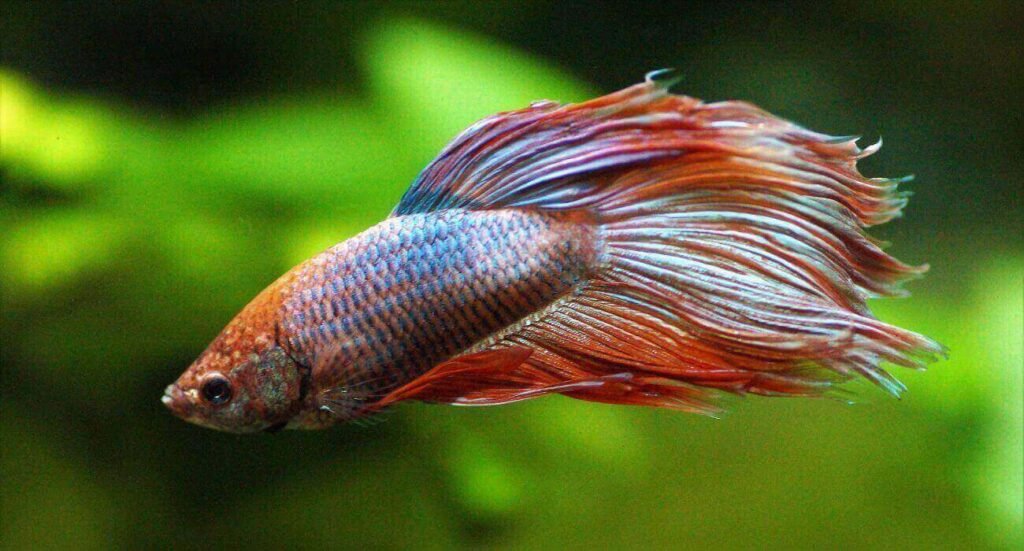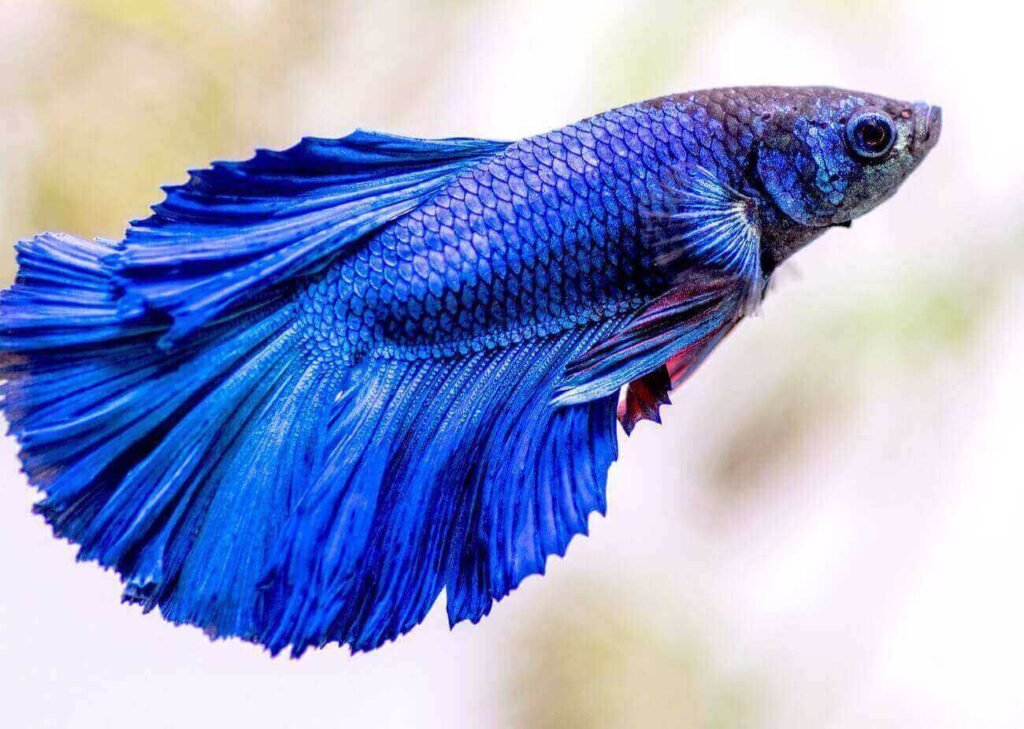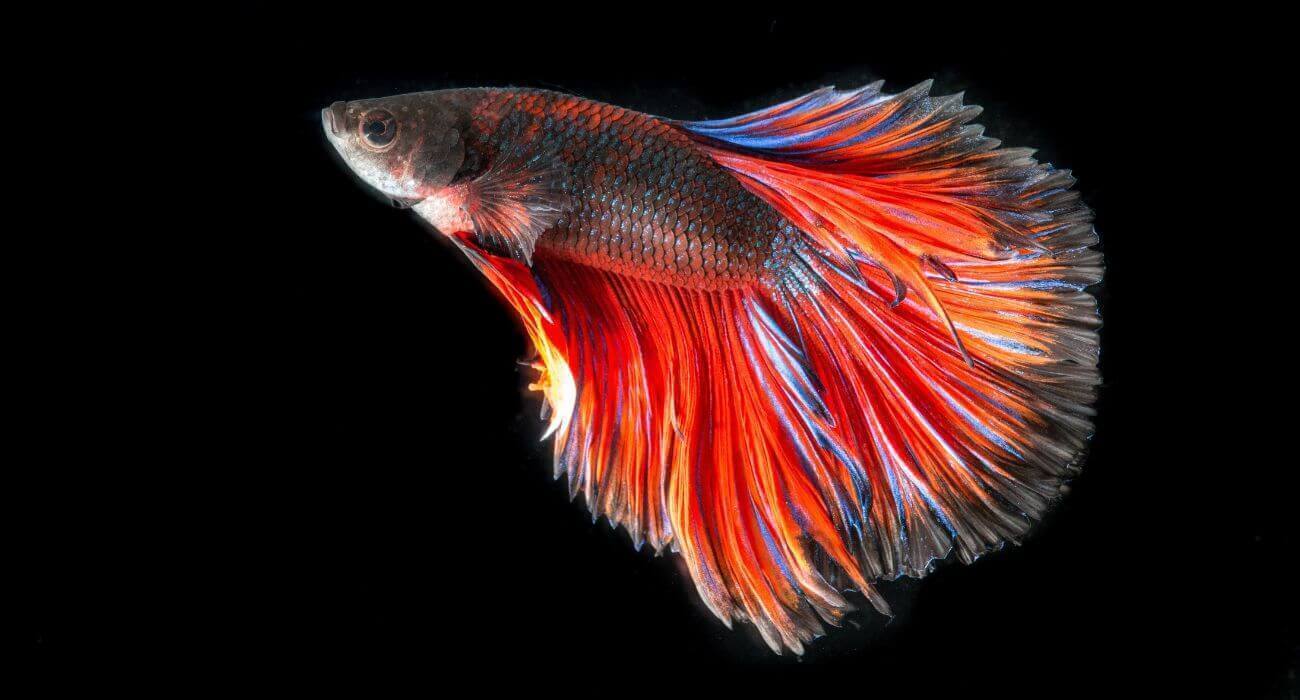As an Amazon Associate, I earn from qualifying purchases
Fighting fish, also known as bettas, have small teeth. These teeth are not visible without magnification.
Betta fish are known for their vibrant colors and flowing fins, but their dental structure is less known to aquarium enthusiasts. These aggressive freshwater fish use their microscopic teeth for grasping and tearing during feeding rather than for combat. The presence of teeth in Bettas is an interesting facet of their anatomy that contributes to their overall health and emphasizes the carnivorous aspect of their diet.
Understanding this feature is crucial for hobbyists to ensure their pets receive appropriate nutrition, enhancing the bettas’ wellbeing and longevity in captivity. Proper care, including awareness of their dental anatomy, can help maintain the health and happiness of these popular aquarium dwellers.
The Biting Truth Behind Fighting Fish
The Biting Truth Behind Fighting Fish sparks curiosity and wonder.
Often called Siamese fighting fish, these creatures display vibrant colors and captivating behaviors.
But do their stunning looks hide a fierce dental array? This post unveils if fighting fish truly have teeth and what purpose they serve.
Dive in as we separate facts from fiction.
A Glance At The Fighting Fish
Fighting fish, or Betta splendens, are native to Southeast Asia.
Known for their aggression and territorial nature, they possess flowing fins and come in various colors.
In shallow, warm waters, they thrive and display fascinating survival tactics.
Their reputation often leads to a common question: Do these fish have teeth?
Myth Vs. Reality: Teeth Or No Teeth?
People think fighting fish can’t have teeth.
But, this belief isn’t accurate.
- Fighting fish do have teeth, small and sharp.
- They are hard to see without a magnifying glass.
- Their teeth are used during feeding.
- Teeth help them hold onto prey firmly.
It’s a myth that fighting fish teeth could harm humans.
Their teeth are designed for their diet in the wild, not for fighting people.
Understanding this reveals the true nature of these aquatic wonders.
Anatomy Of The Fighting Fish
Fighting fish, commonly known as bettas, showcase a remarkable anatomy. Their streamlined bodies enable swift movements. Gills, fins, and scales work together in harmony. Yet, their mouths hold fascinating secrets. This section delves into the mouth structure of fighting fish. It explores if fighting fish possess teeth or structures akin to teeth.
Understanding Their Unique Mouth Structure
The betta’s mouth is more than just a feeding tool. Its shape and mechanics are specialized. Fighting fish have upturned mouths. This unique feature aids in gulping food from the water’s surface. Their mouths are perfectly adapted for their surface-feeding lifestyle.
Teeth Or Tooth-like Structures In Bettas
Now, do bettas have teeth? The answer is yes, they do have teeth. But, these are not like our teeth. They are tiny, almost invisible. Hidden inside their mouths, betta teeth help them grab and eat their prey. These small, sharp tools are crucial for their survival in the wild.
- Fighting fish teeth are pointed.
- They help break down food.
- Their location is on the jawline.
Dietary Habits And Their Connection To Teeth

Fighting fish, also known as Betta fish, show a fascinating interplay of dietary habits and dental structure. These vibrant creatures have evolved in a way that their feeding mechanisms directly influence their oral anatomy. Let’s dive into the details of what they eat and how their teeth play a crucial role.
What Fighting Fish Eat
Fighting fish thrive on a diet rich in proteins and fats. In the wild, their menu includes:
- Insects
- Larvae
- Zooplankton
- Small crustaceans
Captive Bettas often enjoy:
- Pellets designed for Betta fish
- Frozen or freeze-dried foods like bloodworms
- Daphnia
- Occasional treats such as brine shrimp
How Teeth Impact Their Feeding
Fighting fish have tiny, sharp teeth. These teeth allow them to grasp and nibble on their prey. This is vital because their primary food sources are small and slippery.
Their dental features serve two critical functions:
- Securing food without letting it escape
- Breaking down their prey into manageable pieces
Proper tooth function is essential for efficient digestion and overall health.
Aggression In Fighting Fish
Observing fighting fish, also known as bettas, reveals a world of underwater drama. These vibrant creatures are famous for their flashy fins and combative nature. Aggression is a core element of their behavior, often stemming from an instinct to defend territory.
Territorial Behaviors And Biting
Their aggressive interactions are a sight to behold. Bettas flare their gills and spread their fins to appear larger. They patrol their space vigilantly, ready to confront trespassers. It’s not just a visual spectacle but often escalates to physical skirmishes. Biting is a tactical move for them, as they nip at fins and bodies to assert dominance and protect their home turf.
- Displays of Dominance: Flashy fins and gills signal power.
- Patrolling: Bettas monitor their areas closely.
- Confrontation: Intruders face swift challenges.
Role Of Teeth In Fighting
Betta fish do indeed have teeth – tiny, sharp ones designed for combat and feeding. These teeth play a pivotal role in fighting. A betta uses its teeth to grip and tear at opponents during conflicts. The presence and use of teeth impact the intensity and outcome of these undersea battles. Their bite, although not harmful to humans, is a potent weapon in their watery realm.
| Teeth Function | Impact on Fights |
|---|---|
| Gripping | Increases Control |
| Tearing | Inflicts Damage |
| Intimidation | Establishes Dominance |
It is these sharp tools, coupled with a fierce spirit, that make fighting fish both fascinating and formidable in their aquatic domains. Witnessing their behavior offers insights into the complex social dynamics of these solitary but spirited creatures.
Misconceptions About Fighting Fish Bites
Many believe fighting fish, like the Betta, are harmless creatures. Our fascination surrounds their vibrant fins and peaceful floating, yet a question emerges: do these serene beings possess the capability to bite?
Can Fighting Fish Really Bite Humans?
Betta fish, commonly known as fighting fish, stir curiosity with their biting potential. Do their small mouths and peaceful nature translate to a bite-free interaction with humans?
- Fighting fish have teeth, very tiny and almost invisible to the naked eye.
- They use these teeth to grasp and tear their food, not typically for aggression.
- While they ‘bite’ their food, it’s more of a nip when it comes to humans.
- This nip is often gentle and hardly felt, rather than a true bite.
- Thus, the risk of a painful bite to a human is largely exaggerated.
Separating Fact From Fiction
Let’s debunk myths and confirm what’s true about our finned friends:
| Myth | Fact |
|---|---|
| Fighting fish can harm humans with their bites. | Their bites are too mild to cause harm. |
| Bettas are aggressive and will bite out of malice. | They may display aggression towards other bettas, not humans. |
| A betta’s bite can draw blood. | Their teeth are not designed to puncture skin. |
By understanding the truth, we foster a more informed and respectful relationship with Betta fish.
Observing Your Fighting Fish’s Mouth Movements
Understanding your fighting fish, also known as Bettas, involves more than just watching their graceful fins. Observing their mouth movements reveals their mood and health. Fighting fish do have teeth; tiny ones for grasping food. Observing how they use their mouths can tell you if they are hungry or feeling aggressive.
Signs Of Aggression Or Hunger
Bettas show different mouth gestures when they are upset or in need of food. Look for these signs:
- Flaring: Bettas puff out their gills and open their mouths wide to appear more intimidating.
- Nipping: A quick snap at other fish or even the tank’s decor could indicate aggression or hunger.
- Frequent opening: If they’re frequently opening and closing their mouths, hungry Bettas might be searching for food.
How To Safely Watch Your Fish
To watch your Betta safely, avoid startling them. Gentle observations are best. Here’s how:
- Dim the lights: Bright lights can stress fish. Use dim lighting for a relaxed environment.
- Minimal movements: Move slowly around the tank to keep the fish calm.
- Use a magnifying glass: This can give you a closer look without tapping the tank or disturbing your fish.
Handling And Care To Avoid Bites

Fighting fish, also known as bettas, are mesmerizing aquarium pets.
Despite their peaceful appearance, they have tiny, sharp teeth. Proper handling and care are crucial to avoid any surprising nips. While betta bites are rare and usually harmless, knowing how to handle these beautiful fish can prevent any unwanted incidents.
Best Practices For Fighting Fish Owners
- Slow Movements: Always move your hand gently in the aquarium to keep the fish calm.
- Clean Hands: Wash your hands before and after handling the fish to prevent disease.
- Use a Net: If you must move your betta, a soft net is safer for both of you.
- Avoid Overcrowding: Give your betta plenty of space to reduce stress and aggression.
- Feed Properly: Use tweezers or a feeding wand to offer food, minimizing finger contact.
What To Do If You Get Bitten
- Stay Calm: Betta bites are not dangerous; remain calm if one happens to nip you.
- Clean the Area: Rinse your skin with warm water and apply an antiseptic.
- Observe: Watch the bite for signs of infection and seek medical advice if necessary.
Fascinating Facts About Fighting Fish Teeth
Did you know that fighting fish, also known as Bettas, have teeth? While tiny, these teeth are mighty! Dive into the world of fighting fish and discover the secrets behind their dental features. These captivating creatures are not only known for their vibrant colors and dynamic fins but also for their dental adaptations.
Evolutionary Purpose Of Teeth In Fighting Fish
Fighting fish teeth are not just for show. They serve a critical purpose. These teeth have evolved over time to improve survival. They use teeth to grasp and hold prey. This ensures a successful meal. They also play a role in their name-sake activity: fighting. During conflicts over territory or mates, teeth help them assert dominance and defend their space.
Comparison With Other Fish Species
| Fish Species | Teeth Characteristics | Purpose of Teeth |
|---|---|---|
| Fighting Fish | Small, sharp, and numerous | Grasping prey, fighting |
| Sharks | Large, replenishable | Hunting, tearing flesh |
| Parrotfish | Beak-like, fused | Scraping algae, shaping coral |
Fighting fish teeth, while less known, are as specialized as a shark’s or parrotfish’s teeth. Each species’ teeth are optimal for their dietary habits and lifestyle. Betta teeth, smaller and sharper, contrast with the diverse teeth types of other fish but are perfect for their size and needs.
Frequently Asked Questions On Do Fighting Fish Have Teeth
Can Betta Fish Bite You?
Betta fish can nibble but their bite is gentle and usually harmless. They lack the teeth to break human skin.
Do Betta Fish Get Lonely?
Betta fish are not social in the same way as other species and do not require companionship. They are territorial and can thrive alone without feeling lonely.
Why Are Fighting Fish So Aggressive?
Betta fish, also known as Siamese fighting fish, display aggression due to their territorial nature and breeding instincts. This behavior helps them protect their space and secure mates in the wild.
Do Betta Fish Bite Other Fish?
Betta fish can be aggressive and may nip or bite other fish, especially those with long fins or bright colors that they perceive as rivals. It’s best to house them separately to prevent aggression.
Do Fighting Fish Bite?
Fighting fish, also known as bettas, can nip with their gill covers but do not possess actual teeth for biting.
What Are Betta Fish Teeth Called?
Betta fish have small, sharp structures called odontodes which function like teeth to grasp prey.
Can Fighting Fish Chew Their Food?
Rather than chewing, fighting fish swallow their food whole due to their lack of mastication capabilities.
Are Fighting Fish Teeth Visible?
The teeth-like structures in fighting fish are not easily visible without magnification as they are minute.
Do Betta Fish Teeth Grow Back?
Similar to many fish, betta fish’s odontodes can regrow if they become worn down over time.
How Do Betta Fish Use Their Teeth?
Betta fish use their odontodes primarily for grasping and holding onto their prey before ingestion.
Conclusion
Understanding the dental architecture of fighting fish is certainly intriguing. These aquatic warriors are indeed equipped with teeth, albeit small. Their dental adaptations ensure survival via feeding efficiency and combat prowess. As you explore the vibrant world of these fish, remember, their bite is as significant as their beauty in their watery realm.
As an Amazon Associate, I earn from qualifying purchases


